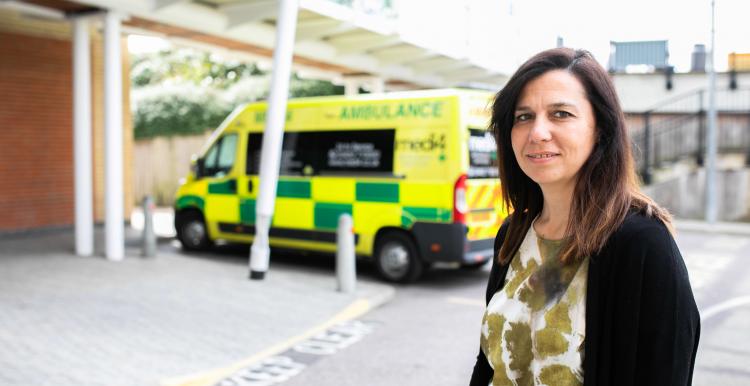More needs to be done to make patients safe, says a CQC report into independent ambulance services

The Care Quality Commission (CQC) is calling on independent ambulance services, commissioners and the wider system to do more to make sure patients are safe, following concerns identified during its inspections.
While the regulator has seen evidence of good practice and improvements made by some individual services, concerns remain about how safely and effectively independent ambulance providers are caring for people using their services.
In a national report published today (Thursday 7 March), CQC presents an analysis of the findings from its comprehensive inspection programme of independent ambulance services in England. The programme was completed in March 2018 and involved inspections of independent ambulance service providers registered with CQC at the end of December 2016.
Independent ambulance providers mainly offer specialist patient transport services and non-emergency responses. However, an increasing number also provide 999 emergency responses to support NHS ambulance trusts routinely or during times of peak demand.
CQC’s report reveals that the quality and safety of independent ambulance services varies greatly. Many services inspected had a poor understanding of governance which often led to weak recruitment processes. Checks to ensure that staff had the appropriate employment references, Disclosure and Barring Service (DBS) certificates, and driving licence categories (e.g. to operate heavier vehicles) were not being enforced consistently.
In addition, many providers offered either no or very limited staff training. This was particularly apparent in relation to emergency driver response training to ensure the skills required to transport a patient using blue lights or sirens, training to equip staff to recognise and escalate safeguarding concerns, and to effectively support patients with mental health needs.
The standard of medicines management was extremely variable. While some services had robust policies to support the safe administration of medication, others showed a lack of understanding, especially around controlled drugs and the need for their safe administration and secure storage. Some services did not have the required Home Office licence for the procurement and storage of controlled drugs.
Inspectors found some good practice in infection control and vehicle maintenance, with evidence of ambulances and stations having regular deep cleans, up-to-date MOTs and insurance cover. However, in other cases they found vehicles that had not been regularly serviced, with missing or faulty equipment (including paediatric apparatus for transporting children in emergencies) and an absence of regular equipment checks.
Looking at the sector more widely, CQC’s report also raises concern about those independent ambulance services that are not subject to CQC regulation, such as where medical cover is provided at temporary events. The regulator believes that the current lack of oversight is putting people at risk and is working closely with local authority event licensing boards and other relevant bodies to ensure they understand their responsibility for the safety of patients in such circumstances. CQC has also highlighted its concerns to the Department of Health and Social Care with a recommendation that the regulations are reviewed to address the existing regulatory gap.
Ellen Armistead, CQC’s Deputy Chief Inspector of Hospitals and lead for ambulance services, said: “We have found and highlighted pockets of good practice in individual services, with compassionate one to one care from ambulance staff, and evidence of improvements in some services when we have been back to reinspect. But we remain concerned about the overall standard of care across the independent ambulance sector.
“Providers have a responsibility to ensure that people within their care receive appropriate treatment, that the vehicles used to transport patients are fitted with the right equipment, that staff are appropriately trained and supported to carry out their roles, risks and incidents are reported and addressed, and that medicines are stored securely. This was not the case in many of the services we inspected.
“It is wholly unacceptable for people using these services to be put at risk and where we have identified concerns we have held those providers to account by making clear where improvements must be made – using our enforcement powers where needed to protect people.
“Those who deliver and commission care must learn from the services that are getting it right so that people are protected from risk and can have confidence in the quality of care they receive from independent ambulance services across the country.”
As well as improvement from providers, CQC is calling for NHS England, clinical commissioning groups and others that commission independent ambulance services to ensure they make safety and quality a priority, and that they use the quality ratings that CQC can now award to independent ambulance services to help them make robust commissioning decisions.
CQC will be strengthening its assessment of how those NHS hospital trusts that sub-contract ambulance services from independent providers ensure they have continued oversight of performance and quality. It will also continue to work with the Department of Health and Social Care to close the gaps in the regulation where it means independent ambulance services that fall outside of CQC’s remit could pose a risk of people being exposed to poor care.
#IndependentAmbulances

